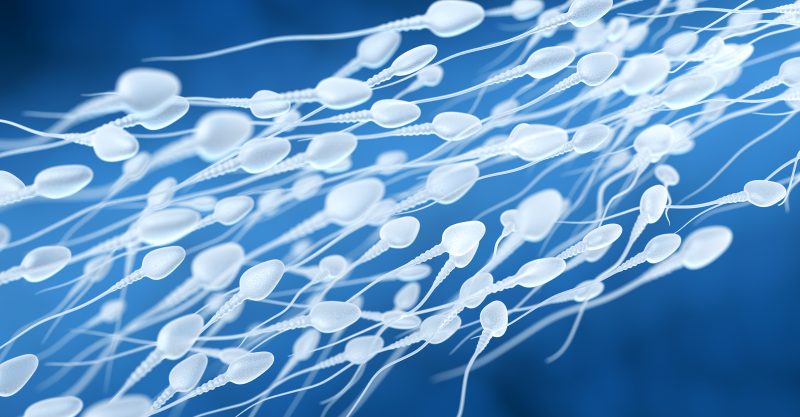Featured
Male infertility threatening ‘future of human race,’ says author of new book
Published
5 years agoon
By
Publisher
Shanna Swan, Ph.D., author of “Count Down,” says endocrine-disrupting chemicals are causing decreased sperm counts, plunging testosterone levels and rising levels of erectile dysfunction.
By Megan Redshaw,
Scientists are witnessing an alarming trend: Men’s sperm counts are down, testosterone levels have plunged and erectile dysfunction is increasing. Male infertility is on the rise — and exposure to synthetic chemicals known as phthalates could be to blame, according to fertility scientist Shanna Swan, Ph.D., author of the new book, “Count Down: How Our Modern World Is Threatening Sperm Counts, Altering Male and Female Reproductive Development and Imperiling the Future of the Human Race.”
Citing Swan’s book, the New York Post reported that the global fertility rate has dropped 50% between 1960 and 2016, with the U.S. birth rate 16% below where it needs to be to sustain the population.
Although girls are experiencing early puberty, and women are experiencing declining egg quality and more miscarriages, emerging science is shifting the focus toward men as more couples suffer from infertility.
Scientists report sperm counts have been dropping, infant boys are developing more genital abnormalities and men’s problems with conception are on the rise. Erectile dysfunction is increasing and testosterone levels are decreasing 1% each year.
In 2017, Swan, one of the world’s leading environmental and reproductive epidemiologists, co-authored a meta-analysis that came to a staggering conclusion: The sperm count of average Western countries had fallen by 59% between 1973 and 2011.
Normal sperm counts range from 15 million sperm per milliliter to 200 million per milliliter. A rate below 15 million is considered “low” by the World Health Organization (WHO), but Swan argues that anything below 40 million creates challenges for reproduction. The average male is nearing that number at 47.1 million sperm per milliliter compared to his father who had an average of 99 million sperm per milliliter at the same age.
“If you look at the curve on sperm count and project it forward — which is always risky — it reaches zero in 2045, meaning the median man would have essentially no viable sperm,” Swan writes in her book.
Men are also experiencing lower testosterone levels. A 2006 study showed that a 65-year-old man in 2002 had testosterone levels 15% lower than a 65-year-old man in 1987. A 2020 study in the Urology Times Journal showed a similar drop with young adults and adolescents.
As a result, more men are getting prescriptions for testosterone replacement therapy, which increases testosterone levels but causes an even greater reduction in sperm count. “Ninety percent of men can have their sperm counts drop to zero while they’re on it,” according to Swan.
Sexual desire among men is also declining. Swan, who has studied infertility for more than 30 years, says men are seeking help for erectile dysfunction on average seven years earlier than they did in 2005, with 26% of men falling under the age of 40.
According to the New York Post, research shows an overall increase in genital abnormalities, including a higher rate of undescended testicles and unusually small penises. Growing numbers of sperm appear defective with some having two heads or wandering aimlessly instead of pursuing an egg.
Exposure to phthalates is a particular problem during pregnancy when fetuses are sexually differentiating in the first trimester, says Swan, and infants with greater exposure to phthalates during pregnancy are shown to have smaller penises.
Similar abnormalities have been observed in animals. Small penises are being reported in alligators, otters and minks. Polar bears have lower-than-normal testosterone levels, panthers are showing an increase in genital abnormalities, and fish, frogs and turtles are being born with both male and female organs.
Research points to endocrine-disrupting phthalates as likely cause
Swan and her colleagues say the problem could be caused by a class of endocrine disruptors known as phthalates, which mimic the body’s hormones.
Phthalates are synthetic chemicals used to make plastics more flexible and harder to break. The chemicals are everywhere: plastics, shampoos, cosmetics, furniture, flame retardants, personal care products, pesticides, canned foods and even receipts.
In several studies over the last two decades, phthalates have been shown to disrupt male hormones like testosterone and to cause genital birth defects in male infants.
A 2018 systematic review published in Environmental International showed phthalates decreased testosterone and caused negative reproductive outcomes in men.
Flame retardants found in mattresses and foam furniture were linked to male infertility in a 2016 study published in the Reproductive Toxicology Journal, and chemicals in stain, water, fast-food packaging, paper plates, stain-resistant carpeting and other household items have been linked to a reduction in semen quality, testicular volume and penis length.
A 2017 U.S. study showed that 45 potentially harmful chemicals, including phthalates and flame retardants, were present in dust buildup in 90% of homes sampled, reported the New York Post.
Pesticides and herbicides have also been found to negatively affect male infertility. Atrazine, an herbicide used to prevent certain weeds from growing in corn, has been linked to lower sperm quality.
In her latest book, Swan writes:
“The problem isn’t that something is inherently wrong with the human body as it has evolved over time; it’s that chemicals in our environment and unhealthy lifestyle practices in our modern world are disrupting our hormonal balance, causing varying degrees of reproductive havoc that can foil fertility and lead to long-term health problems even after one has left the reproductive years.”
The cumulative effect of endocrine disruptors affect multiple generations. Patrician Hunt, a reproductive geneticist at Washington State University, conducted experiments on mice. When infant mice were exposed to disruptive chemicals for a few days their testes as adults produced fewer sperm. The mice passed on this propensity to their offspring, and after three generations of exposure, one-fifth of male mice were infertile.
“I find this particularly troubling,” Professor Hunt told The New York Times. “From the standpoint of human exposures, you could argue we are hitting the third generation just about now.”
According to the Times, the Endocrine Society, Pediatric Endocrine Society, President’s Cancer Panel and WHO have all warned about endocrine disruptors, while Europe and Canada have moved to regulate them.
Expert recommendations to increase male fertility
Although more research, government regulation and corporate responsibility are needed, Swan offers practical suggestions to help men tip the scale:
Store food in glass containers and never microwave food in plastic.
Stop smoking and cut back on drinking. Cigarette smoke is associated with a lower sperm count and increased sperm defects, while more than seven drinks per week is harmful to sperm.
Buy organic to avoid pesticides and herbicides that interfere with male hormones, especially strawberries, spinach, kale, apples and grapes. Swan also recommends reducing full-fat dairy foods, which have been linked to greater sperm abnormalities and avoiding processed meats, which can harm the DNA of sperm.
Avoid saunas, binge watching TV and cut out stress, says Swan. A Danish study, “Psychological stress and testicular function: a cross-sectional study of 1,215 Danish men,” published in Fertility and Sterility Journal, showed that high levels of work stress resulted in a 38 percent lower sperm concentration.
“Men who’ve experienced two or more recent stressful life events — such as the death or serious illness of a close relative, divorce or serious relationship problems, moving, or a job change — were more likely to have below-normal sperm concentration,” writes Swan.
Buy products labeled “paraben-free” and “phthalate free” and avoid skin-care products that are “antibacterial,” vinyl shower curtains, air fresheners, toxic household cleaners, and dust often to remove the build-up of chemicals, urges Swan.
“We can no longer afford to behave as though it’s business as usual,” Swan writes in her book. “The time has come for us to stop playing Russian roulette with our reproductive capacities.”
- Culled from www.Childrenshealthdefense.org
Trending

 Uncategorized7 days ago
Uncategorized7 days agoCVR: INEC records 139,251 applications in Lagos

 Business1 week ago
Business1 week agoNCC moves to resolve Abuja network disruptions, blames diesel supply crisis

 Business6 days ago
Business6 days agoNew tax law: No law allows arbitrary bank debits, says Oyedele

 Politics3 days ago
Politics3 days agoPRP conducts ward, LG congresses in Lagos, elects new executives

 News3 days ago
News3 days agoHeart of Gold Empowerment Outreach bolsters 30 indigent’s economic status in Edo State

 Crime5 days ago
Crime5 days agoPolice To Resume Tinted Glass Enforcement

 Latest5 days ago
Latest5 days agoSEARP decries delay in enforcing judgment on N6tn NDDC misappropriation scandal, threatens suit against AGF Fagbemi

 Business5 days ago
Business5 days agoFG to lose N1.4trn annually as corporate tax cut takes effect in 2026

